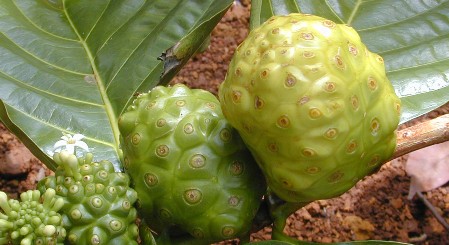Indian Mulberry
(Morinda citrifolia)



Pick very young leaves and ripe fruits that are soft, have a noticeable odor, and have started turning white in color.
Keep fruits and leaves in a dry, well-ventilated place. Leaves can be dried for longer storage.
Wikimedia.org
Pure Fruit Juice Nutrition Facts


Mulberry, or noni, grows from a small tree with white flowers, large dark green leaves, and bumpy fruits. The fruit has seeds wrapped around flesh that is yellowish-white in color and has a strong odor when ripe. The leaves and fruits are traditionally used for medicine in the Pacific islands (Bailey, 1992; Nelson, 2006).